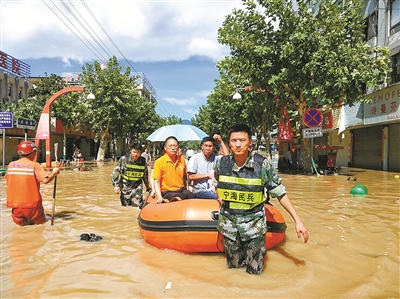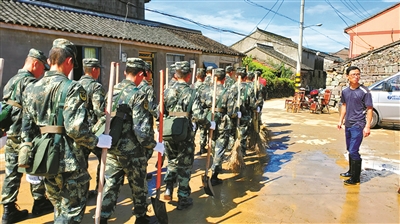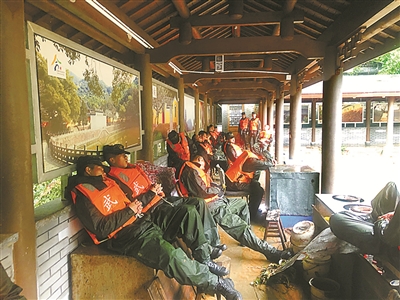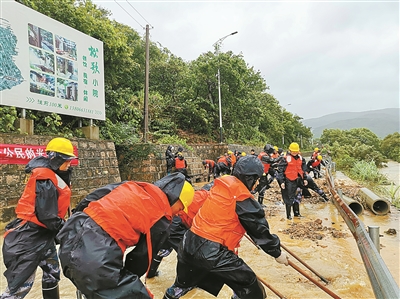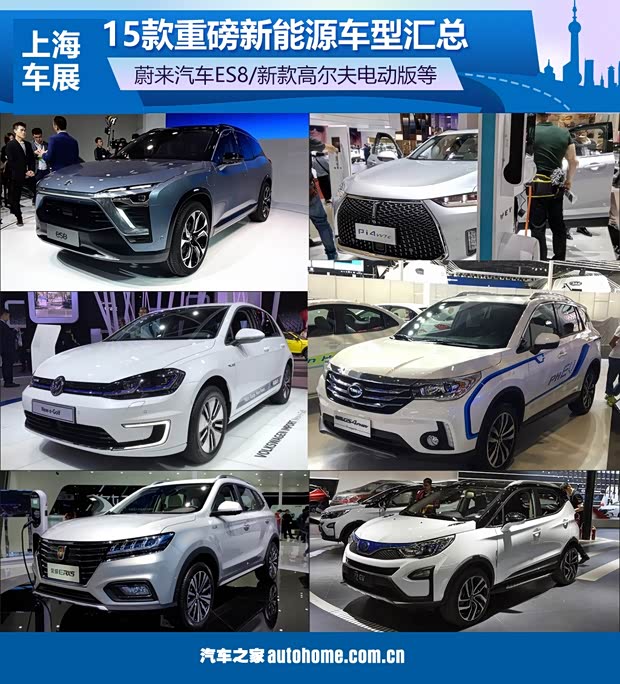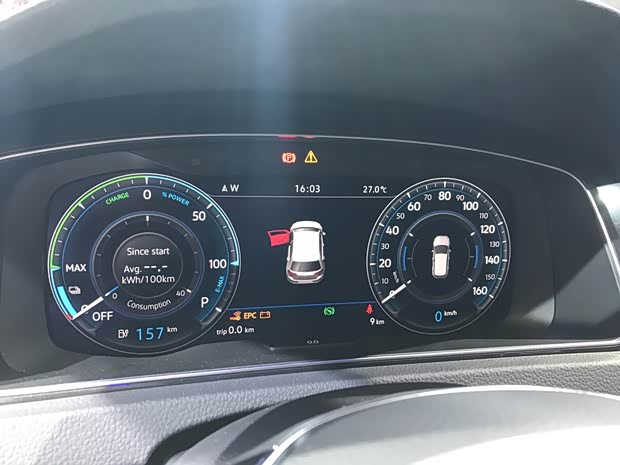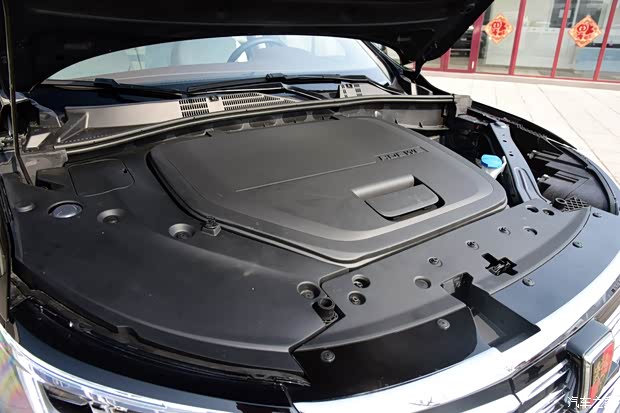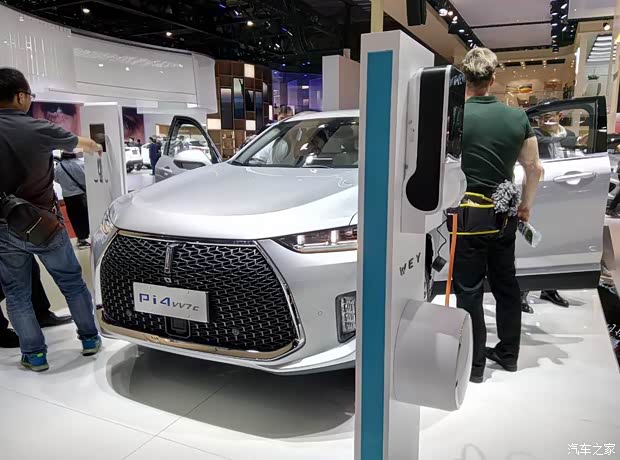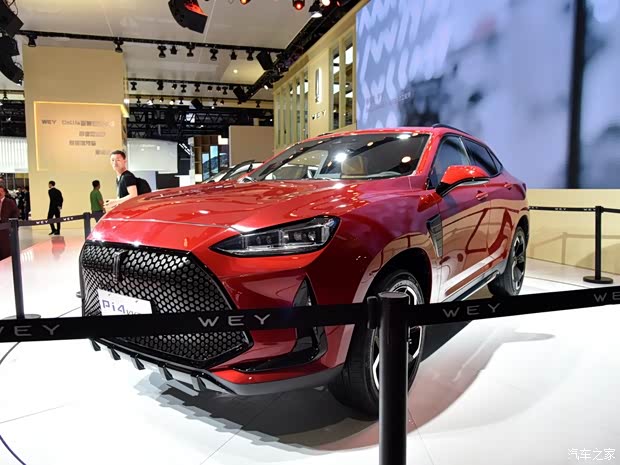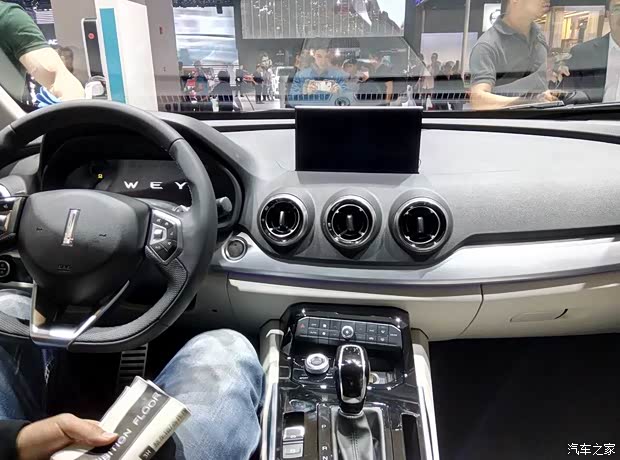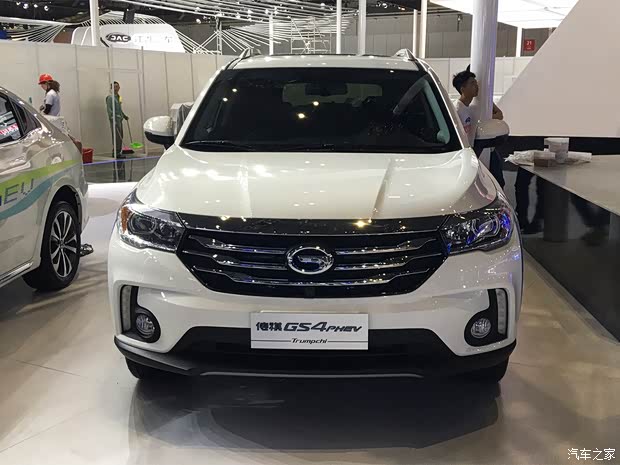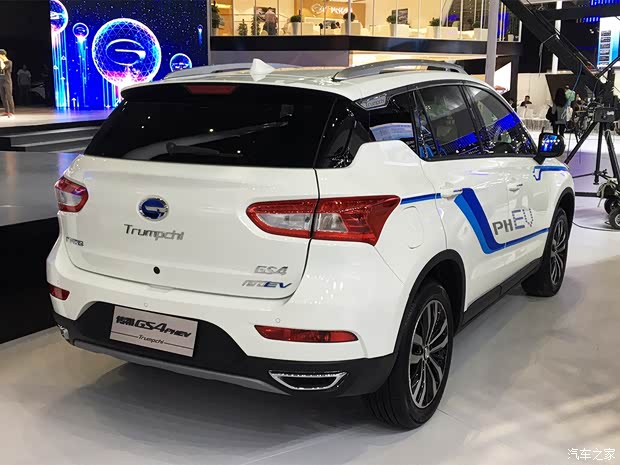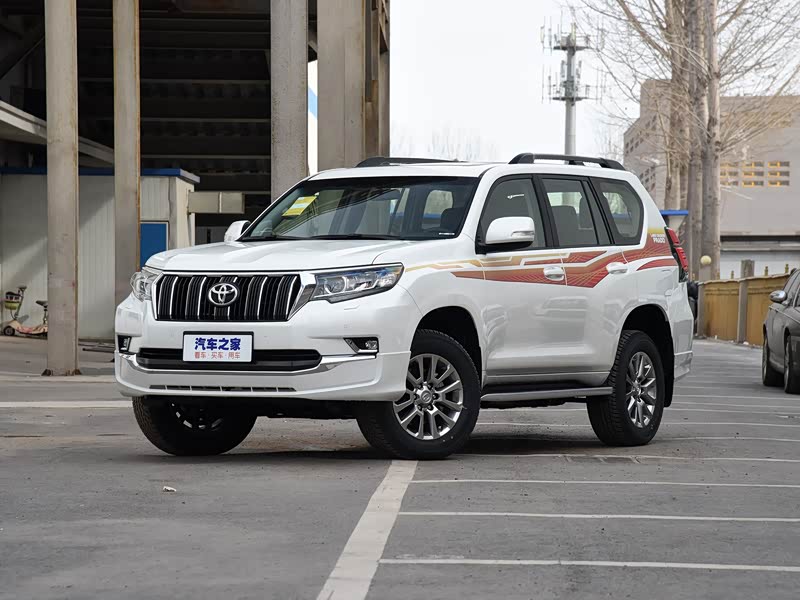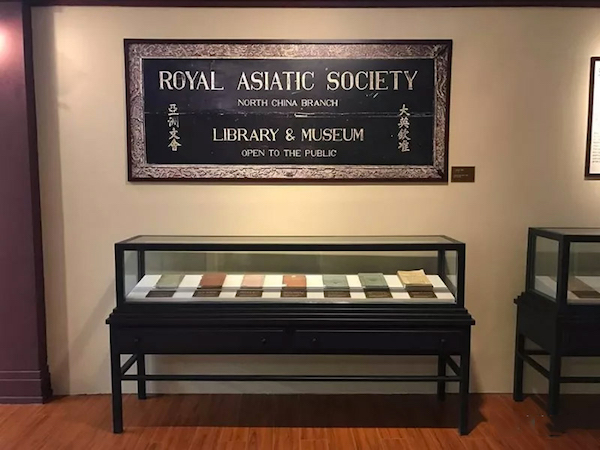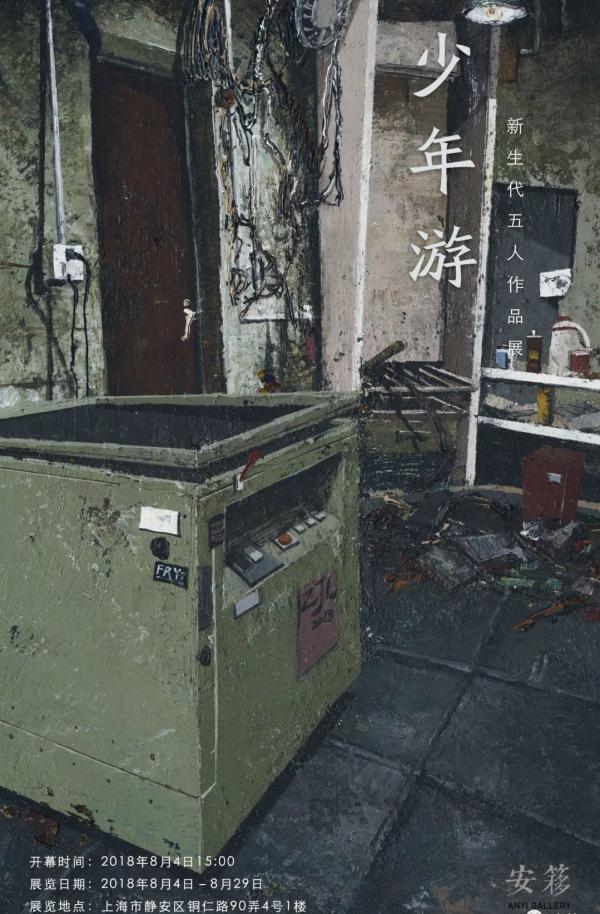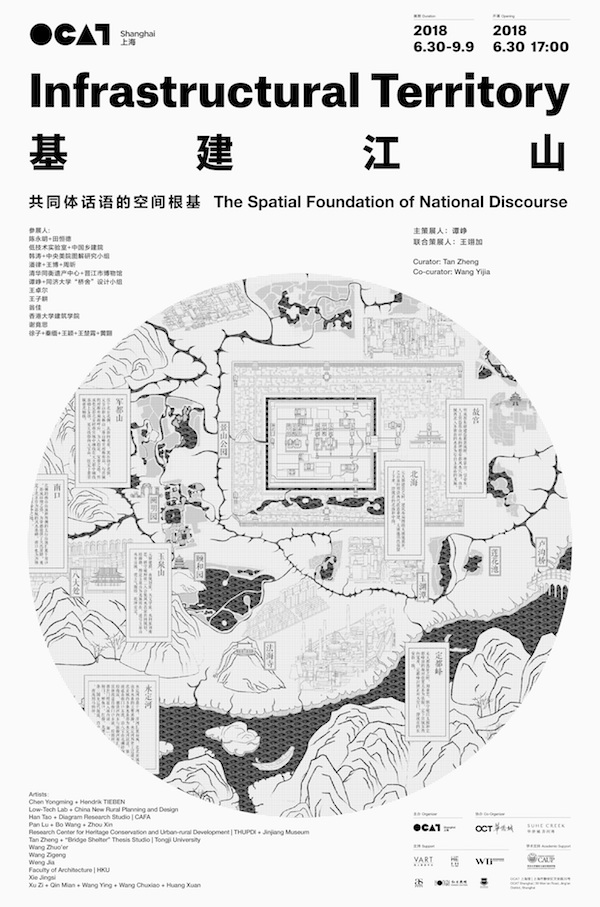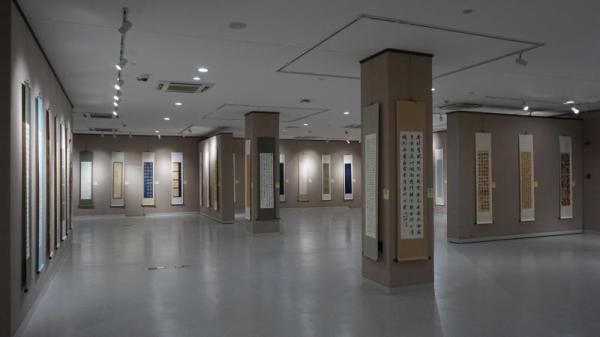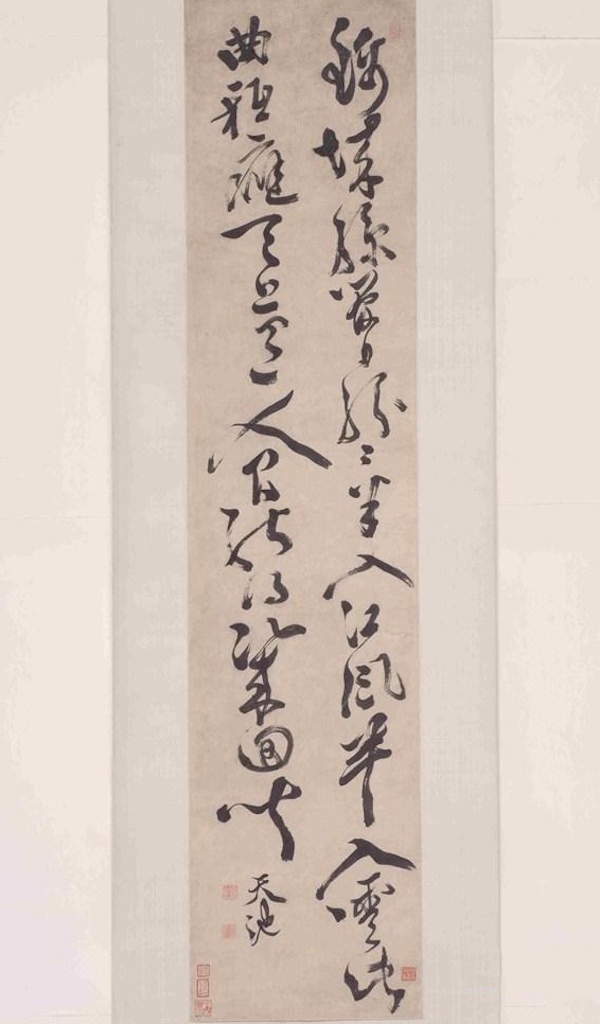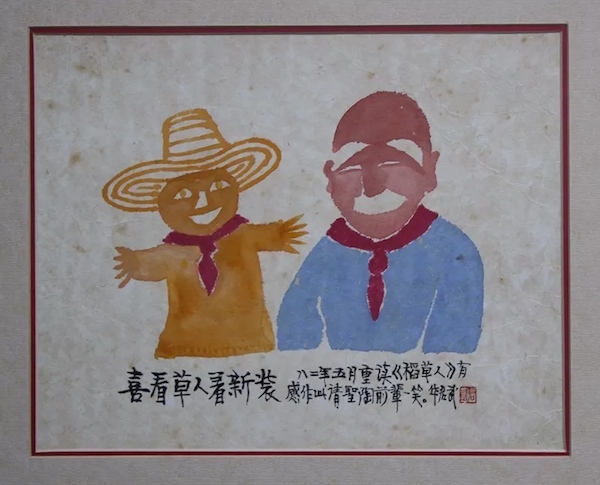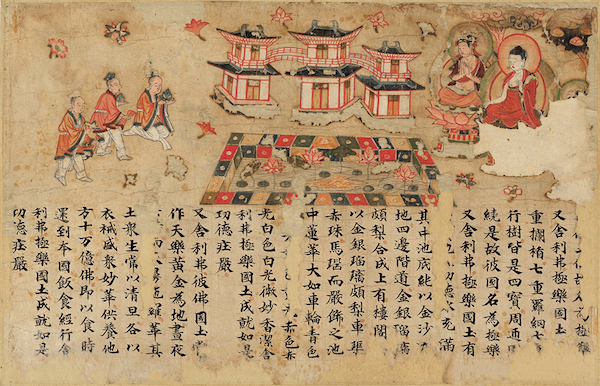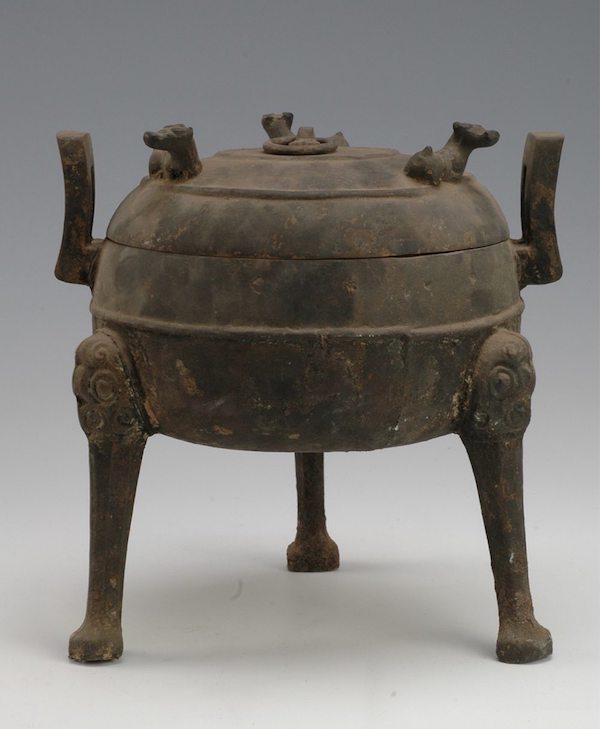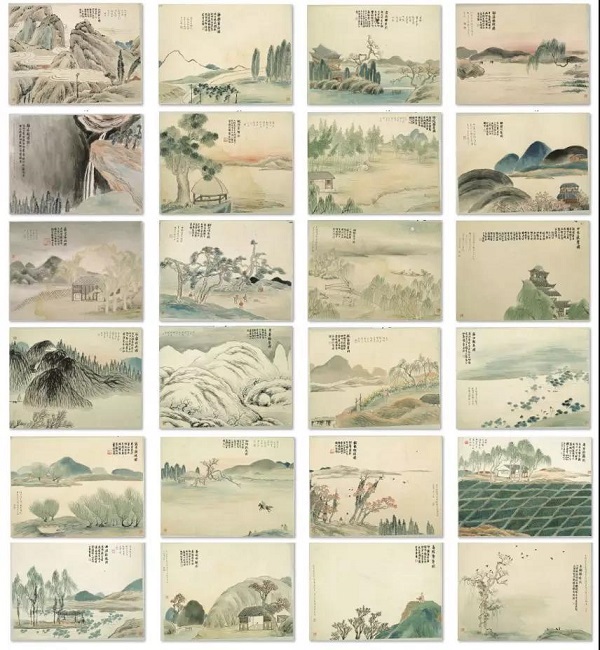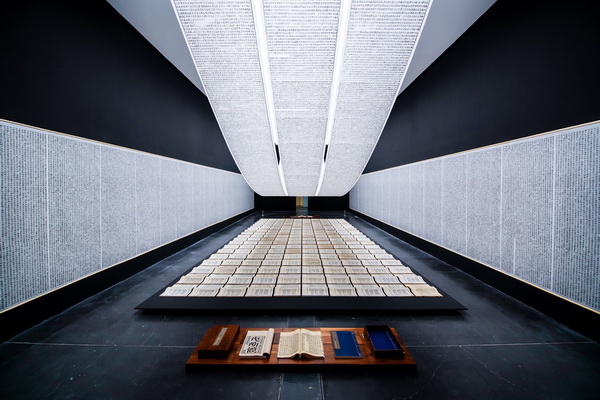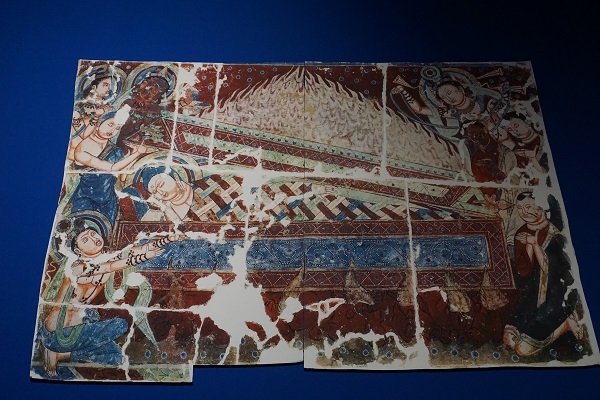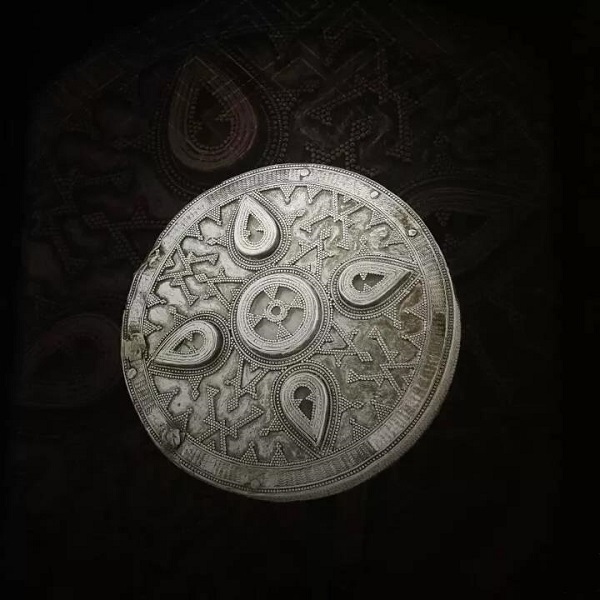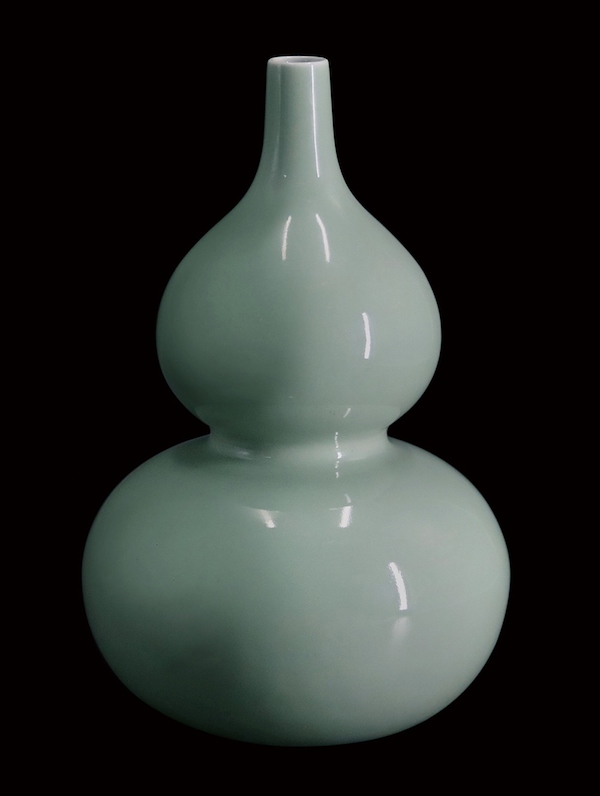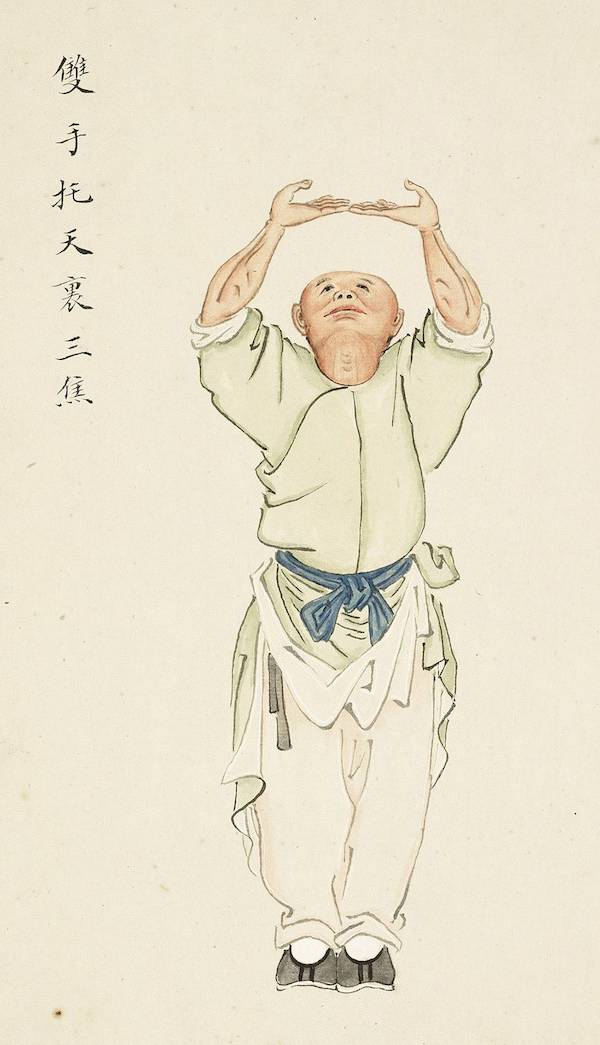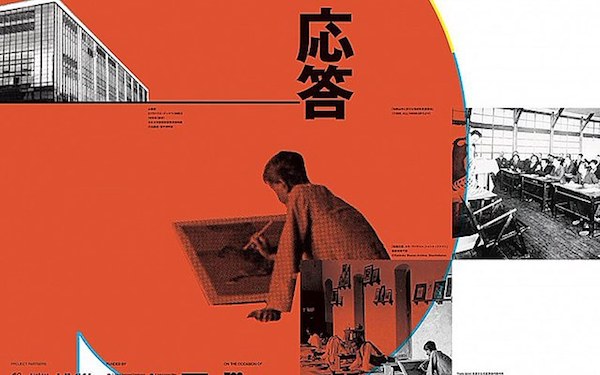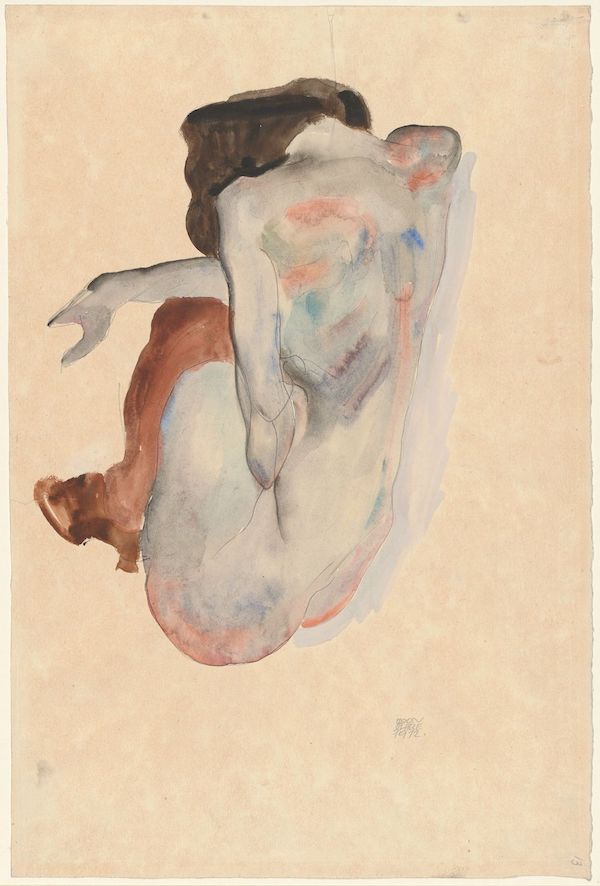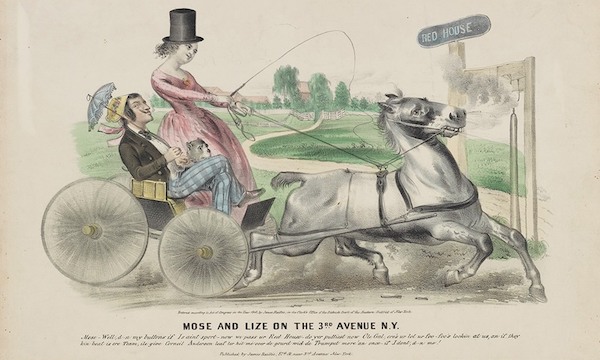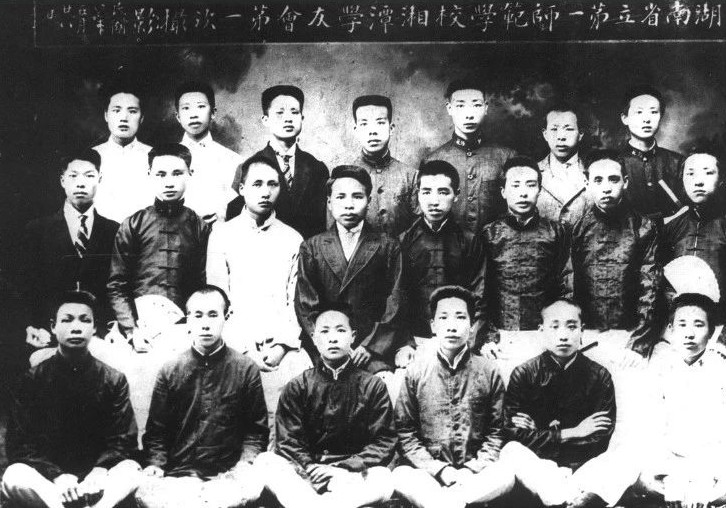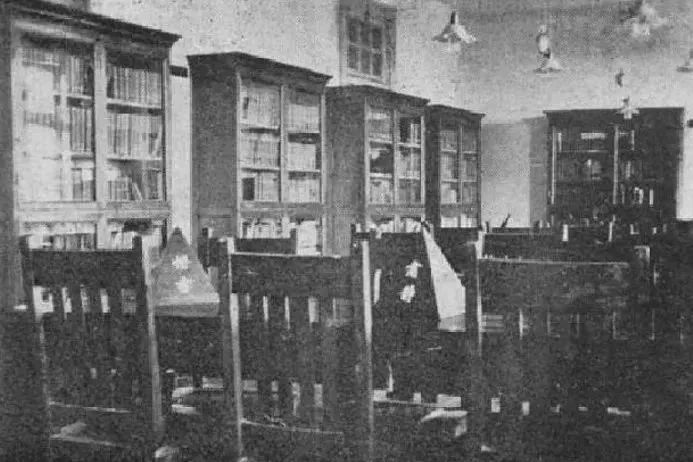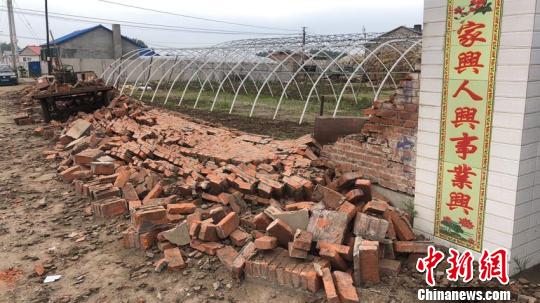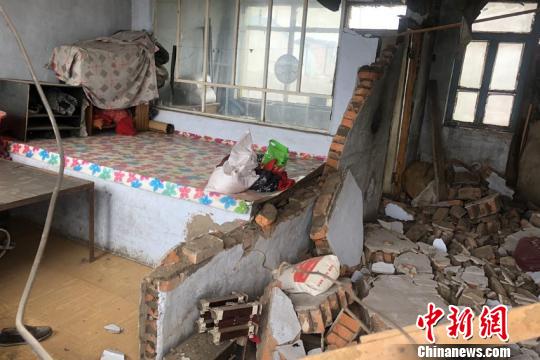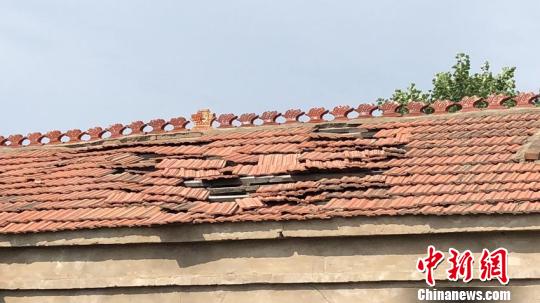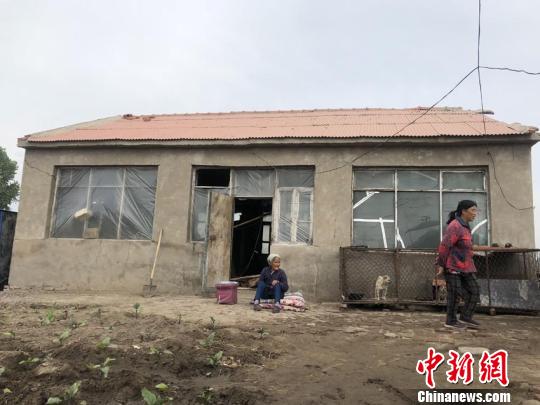District committees, district governments, ministries and commissions of the Municipal Party Committee, municipal state organs, state-owned enterprises, people’s organizations and institutions of higher learning:
With the consent of the Municipal Party Committee and the Municipal Government, the Beijing Urban Renewal Action Plan (2021-2025) is hereby issued to you, please conscientiously implement it in light of the actual situation.
General Office of Beijing Municipal Committee of CPC
General Office of Beijing Municipal People’s Government
August 21, 2021
Beijing Urban Renewal Action Plan (2021-2025)
It is of great significance to carry out urban renewal action and change the mode of urban development and construction and economic growth to comprehensively improve the quality of urban development, meet people’s growing needs for a better life and promote sustained and healthy economic and social development. This action plan is formulated to accelerate the urban renewal.
I. General requirements
(A) the guiding ideology
Guided by Socialism with Chinese characteristics Thought of the Supreme Leader in the New Era, fully implement the spirit of the 19th National Congress of the Communist Party of China and the Second, Third, Fourth and Fifth Plenary Sessions of the 19th National Congress, thoroughly implement the spirit of the important speech of the Supreme Leader to Beijing, base on the new development stage, implement the new development concept, integrate into the new development pattern, adhere to the people-centered development thought, and implement the requirements of the city’s "14th Five-Year Plan" under the guidance of the Beijing urban master plan; Always adhere to the principle of improving urban functions, forming dynamic space, introducing social capital, improving people’s livelihood and well-being, adhering to planning guidance, first good standards, market players and multi-party participation, and persisting in changing the mode of urban construction and development from relying on incremental development to stock renewal; Constantly strengthen the function construction of "four centers", improve the level of "four services", and accelerate the construction of a world-class harmonious and livable capital.
(2) Overall objective
Through the implementation of urban renewal, we will further improve the urban spatial structure and functional layout, promote industrial transformation and upgrading, and build an international science and technology innovation center; Establish a benign urban self-renewal mechanism to improve the quality and efficiency of existing space resources and provide a more effective space carrier for the construction of "two districts"; Vigorously develop the digital economy to revitalize the existing space resources to support the construction of a global digital economy benchmark city; Lead and create new demand with supply-side structural reform, promote the adjustment and upgrading of industrial structure through renovation, expand the effective supply of culture, optimize the investment supply structure, promote consumption upgrading, and build an international consumption center city; Work closely with the special action of resolving, rectifying and promoting promotion to resolve the function of Beijing’s non-capital as a "bull nose" and further promote the coordinated development of Beijing-Tianjin-Hebei. Accelerate the solution to the problems of incomplete public service facilities, insufficient public space and poor basic conditions of fire safety, make up shortcomings and strong and weak items, effectively improve the living environment and safety conditions, and constantly meet the people’s "seven haves" requirements and "five needs".
(3) Basic principles
1. Planning leads and pilots go first. Implement Beijing’s overall urban planning, regulatory detailed planning and zoning planning, so as to strictly control the total amount, make overall planning by zoning, and balance the increase and decrease. According to the urban spatial layout, functional orientation and resource endowment of different circles, we should pay attention to zoning guidance and classification to formulate policies. Adhere to the combination of bottom-up renewal requirements and top-down planning guidance requirements, intensify the reform of policies and mechanisms, carry out pilot projects first, explore new modes, paths and mechanisms of urban renewal, and carry out urban renewal actions in an orderly manner.
2. Promote development and improve people’s livelihood. Promote intensive and connotative development, promote the optimal allocation of capital, land and other factors, cultivate new kinetic energy for development, stimulate urban vitality and improve urban quality. Closely follow the requirements of "seven haves" and "five needs", improve urban functions, fill the shortcomings of public services and infrastructure, improve the quality of human settlements, and ensure and improve people’s livelihood.
3. Government guidance and market operation. Give full play to the role of the government in overall planning and guidance, establish a working mechanism of urban renewal action based on district and urban linkage, study and formulate supporting policies, and strengthen overall planning and promotion. Fully stimulate the vitality of the market, mobilize the enthusiasm of real estate property owners, market players and social forces, and introduce social capital in various ways. Renovation and transformation space is mainly based on holding operation, and multi-channel investment model is explored.
4. Multi-participation, common governance and sharing. Adhere to the guidance of party building, give full play to the institutional role of "whistle for reporting", handle complaints immediately, and be responsible planner, encourage residents and various owners to play the main role in urban renewal, strengthen public participation, establish a pluralistic and equal consultation and co-governance mechanism, explore effective ways to incorporate urban renewal into grassroots governance, and continuously improve the level of rule of law by precision and co-governance.
Second, the project type
Implement urban renewal action, focus on improving the quality and efficiency of the existing space resources in urban built-up areas, and do not engage in large-scale demolition and construction. Except for the transformation of urban shanty towns, in principle, it does not include housing expropriation, land expropriation, land reserve, real estate development and other projects. The urban renewal action is effectively connected with the special action of relieving and rectifying and promoting promotion, and the spatial resources of relieving and retreating are planned and utilized.
(1) Application for rent withdrawal, protective repair and restoration of bungalows (courtyards) in the functional core area of the capital.
Adhere to the principle of "guarantee to guarantee", promote the protection and renewal of the old city bungalow area, and restore the basic pattern of traditional quadrangles. Continue to promote the application-based rent withdrawal of bungalows (courtyards), dismantle illegal construction, make rational and efficient use of vacated houses, improve supporting functions and improve the living environment. Implement protective repair and restorative construction, build a "symbiotic courtyard", explore ways to improve the diversified living environment, and guide the organic replacement of functions and the harmonious coexistence of residents. We will promote the authorization of the management right of directly managed public houses and actively introduce social capital to participate in the renewal. After the restoration construction is completed, the district government can entrust a property service enterprise by purchasing services or establish a property management mechanism in the bungalow area through other forms.
Responsible unit: Municipal Housing and Urban-Rural Development Committee and Municipal Planning and Natural Resources Committee are responsible for formulating relevant policies, refining work objectives and tasks, and coordinating and promoting project implementation; Dongcheng District Government and Xicheng District Government are responsible for project implementation.
Target and task: By 2025, 10,000 households in bungalows (courtyards) in the functional core area of the capital will apply for rent withdrawal and 6,000 households will be repaired.
(2) Renovation of old residential areas
Insist on doing our best and doing what we can, and implement the transformation of old residential areas in a way that combines top-down tasks with bottom-up projects. Reasonably determine the transformation plan, continuously improve the project repository, bring the mature conditions into the scope of implementation, transform according to the basic category, perfect category and upgrade category, and implement them in a rolling manner. In accordance with the "double inclusion" working mechanism, we will cooperate with the transformation of old residential areas at the same level of central and state organs, as well as the transformation of old residential areas in Beijing by their affiliated institutions and central enterprises. Carry out mass work in depth, adhere to the principle of voluntary residents, give play to the role of owners and owners’ committees, and fully mobilize the enthusiasm of residents to participate in the transformation. Bring the old community into the category of community governance, and improve the long-term management mechanism of the community through transformation. Actively explore the multi-party financing model for the transformation of old residential areas, popularize the "Jinsong model" and "the first experience", and improve the market-oriented implementation mechanism. According to residents’ wishes, we can make use of the current legal houses and public spaces in the community to supplement public service facilities, and encourage the use of Kugaji, illegally vacated land and underground space to build convenience service facilities. Focus on the transformation of old residential areas in the core area. Actively and orderly promote the installation of elevators in existing multi-storey residential buildings.
Responsible unit: the Municipal Housing and Urban-Rural Development Committee takes the lead in formulating relevant policies, refining work objectives and tasks, and coordinating and promoting project implementation; District governments are responsible for project implementation.
Target and Task: By 2025, we will strive to complete the renovation task of 160 million square meters of old residential areas that need to be renovated before the end of 2000 in the city, focusing on the comprehensive renovation task of 5 million square meters of earthquake resistance and energy saving in the city, the renovation task of 31 million square meters of energy saving and the renovation projects with strong public willingness, and cooperate with the renovation task of 60 million square meters of old residential areas in Beijing.
(3) Housing reform of dilapidated buildings and vacating and rebuilding of simple buildings
Conduct a thorough investigation of dangerous old buildings and simple buildings, establish ledgers, and formulate renovation plans by classification. For dilapidated buildings that meet the planning requirements, renovation, reconstruction or appropriate expansion are allowed. If conditions permit, the scale of the building is appropriately increased, kitchen and bathroom facilities are fully equipped, and underground space, vacated space and idle space are rationally used to build supporting facilities. For simple buildings that do not meet the planning requirements and are located in key areas and historical and cultural blocks, residents are encouraged to vacate and move out to improve their living conditions. Dangerous old buildings and simple buildings should introduce standardized and market-oriented property management mechanism through reconstruction and vacating.
Responsible unit: the Municipal Housing and Urban-Rural Development Committee takes the lead in formulating relevant policies, refining work objectives and tasks, and coordinating and promoting project implementation; District governments are responsible for project implementation.
Objectives and tasks: By 2025, the housing reform of 1 million square meters of dilapidated buildings and the retirement and renovation of simple buildings will be implemented.
(D) The transformation and upgrading of old buildings and traditional business districts
Encourage the renovation and upgrading of old buildings to meet the development needs of modern service industries such as scientific and technological innovation, financial management and business services. Improve the architectural design level and architectural performance, and strive to build a safe, intelligent and green smart building. Dig deep into the stock of idle old buildings, encourage them to be transformed into dormitories and apartments for urban operation service support personnel, and promote the balance between occupation and residence.
Encourage traditional business districts to carry out all-round transformation and upgrading around industrial structure adjustment, business format optimization, space quality improvement, marketing model innovation, regional brand building, fine management services, and improved openness, so as to expand new scene applications, tap new consumption potential, and enhance urban vitality. Promote functional mixing, innovate service supply methods, and fill shortcomings. Encourage the participation of diverse social capital, improve the initiative of innovation and transformation of owners and transformation institutions, and promote the establishment of a self-sufficient "hematopoietic" mechanism for renewal projects.
Responsible unit: the Municipal Housing and Urban-Rural Development Committee and the Municipal Development and Reform Commission are responsible for formulating policies related to the renovation and upgrading of old buildings, while the Municipal Bureau of Commerce takes the lead in formulating policies related to promoting the renovation and upgrading of traditional business districts, refining work objectives and tasks, and coordinating and promoting project implementation; District governments and Beijing Economic and Technological Development Zone Management Committee are responsible for the implementation of the project.
Objectives and tasks: Carry out performance evaluation of old buildings and traditional business districts, fully consider the safety, performance and comprehensive contribution rate of buildings based on big data analysis, strengthen communication and consultation with owners and investors, establish ledgers, and formulate renovation plans and annual implementation plans. By 2025, we will focus on promoting the renovation and upgrading of inefficient old buildings of about 5 million square meters and complete the renovation and upgrading of 22 traditional business districts.
(E) inefficient industrial parks "cage for birds" and the renovation of old factories.
Actively support the renewal of existing inefficient industrial parks, use the vacated space to build an industrial collaborative innovation platform, and promote the transformation and upgrading of traditional industries. Establish a positive and negative list system for the planning and use of industrial parks, deconstruct non-capital functions, develop new industries and formats, gather innovative resources and cultivate emerging industries.
Fully tap the historical, cultural and contemporary value of industrial remains, improve the policies for the transformation and utilization of industrial remains, guide the use of old factories to build new infrastructure, develop industrial formats such as modern service industries, supplement regional public service facilities such as education, medical care and culture, and build new service consumption carriers such as tourism, entertainment and recreation.
Responsible unit: Municipal Bureau of Economic and Information Technology, Municipal Science and Technology Commission and Zhongguancun Management Committee are responsible for formulating policies to promote the renovation of inefficient industrial parks, while Municipal Bureau of Economic and Information Technology, Municipal Development and Reform Commission, Municipal Science and Technology Commission and Zhongguancun Management Committee are responsible for formulating policies to promote the renovation of old factories, refining work objectives and tasks, and coordinating and promoting project implementation; District governments and Beijing Economic and Technological Development Zone Management Committee are responsible for the implementation of the project.
Objectives and tasks: To evaluate the industrial parks that need to be renovated or upgraded, as well as the industrial parks and old factories that belong to the industrial restricted catalogue, do not meet the requirements of safe production and ecological environment, and are idle and inefficient. Establish a ledger and make an annual plan. By 2025, we will promote the renovation of 700 old factories and inefficient industrial parks in an orderly manner.
(six) the transformation of urban shanty towns
Taking improving people’s living conditions as the starting point and the end result, we will accelerate the transformation of urban shanty towns and realize the gradual write-off of projects in transit. Strictly control the scope, standards and costs of transformation, and start a number of urban shanty towns transformation projects with strong people’s willingness to transform. Make full use of the special debt for shed reform, study the overall balance mechanism of funds, promote land supply by stages, and realize rolling development. Coordinate the construction sequence of resettlement houses, plan and construct municipal infrastructure such as water, electricity, gas and heat simultaneously with resettlement houses, and ensure that the demolished people are resettled on schedule.
Responsible unit: the Municipal Housing and Urban-Rural Development Committee takes the lead in formulating relevant policies, refining work objectives and tasks, and coordinating and promoting project implementation; District governments are responsible for project implementation.
Target and Task: By 2025, 134 shantytown renovation projects in transit towns will be basically completed, and 30,000 households will be renovated.
Third, the project implementation path
Innovate the urban development and construction mode, strengthen the overall planning of unit renewal and sub-renewal, overall planning of urban renewal and renovation to promote upgrading, overall planning of above-ground and underground renewal, overall planning of key project construction and surrounding area renewal, overall planning of government support and social capital participation, and promote the efficient and orderly development of urban renewal.
(A) block as a unit to co-ordinate urban renewal
Evaluate the renewal area around the aspects of urban function reconstruction, space reconstruction, public goods provision, improvement of living environment, urban cultural revival, ecological environment restoration and economic structure optimization, sort out the existing problems, scientifically divide the renewal units, and clarify the goals of block function optimization and environmental quality improvement.
Formulate the renewal plan of each block, integrate all kinds of spatial resources, and make up the shortcomings and strengths in a targeted manner. Coordinate the renovation of bungalows (courtyards), old communities, old buildings and old factories in the block, and promote the improvement of living space and the improvement of production space. Strengthen urban repair and ecological restoration of blocks, and promote the overall renewal of blocks.
Strengthen the landscape design and construction of public space in the block to form a perfect public space system. Optimize the allocation of street furniture and promote the miniaturization, invisibility and integration of municipal facilities. We will strengthen the fine utilization of the vacated space and the renovation of the corners. Strengthen the connection of public service facilities, greenway blue network and slow-moving system, and promote the open sharing of park green space.
Responsible unit: the Municipal Planning and Natural Resources Committee takes the lead in preparing the special plan for urban renewal, defines the goals and tasks of urban renewal at the block level, and coordinates and promotes the implementation of the project; The Municipal Urban Management Committee takes the lead in formulating policies to promote the miniaturization, invisibility and integration of municipal facilities; District governments and Beijing Economic and Technological Development Zone Management Committee are responsible for the implementation of the project.
(B) to promote urban renewal by integrating rail transit stations with cities.
Strengthen the integrated planning of rail transit station and surrounding land and the comprehensive utilization of station land, realize the organic integration of rail transit, especially suburban railway construction and urban renewal, and drive the surrounding stock resources to improve quality and efficiency through the integrated construction of rail transit station. We will formulate a special plan for the urban renewal of the integration of stations and cities, build a rail micro-center in combination with key projects of rail transit and suburban railways, promote the functional integration of stations with surrounding businesses, offices and residences, supplement public service facilities, create better open space, increase regional vitality and improve urban quality.
Responsible units: Municipal Planning and Natural Resources Commission, Municipal Development and Reform Commission, Municipal Transportation Commission and Municipal Major Project Office are responsible for studying and formulating relevant policies, integrating resources around the site, exploring the rules and paths for bundling implementation, and coordinating and promoting project implementation; District governments and Beijing Economic and Technological Development Zone Management Committee are responsible for the implementation of the project.
(C) the construction of key projects to promote urban renewal
Coordinate the construction of key projects and urban renewal in surrounding areas, combine the construction of key urban public facilities, sort out the shortcomings of functions and supporting facilities in surrounding areas, and study and put forward the scope and content of renewal and transformation. Combined with the construction of key projects, we will promote the quality improvement and efficiency improvement of old buildings and traditional business districts, old factories and inefficient industrial parks in the surrounding areas, and promote the quality improvement of public spaces and public facilities.
Responsible unit: the Municipal Housing and Urban-Rural Development Committee and the Municipal Development and Reform Commission are responsible for formulating key project plans, integrating resources around key projects, and coordinating and promoting project implementation; District governments and Beijing Economic and Technological Development Zone Management Committee are responsible for the implementation of the project.
(four) to promote individual renovation projects in an orderly manner.
Respect the wishes of residents and owners, integrate all kinds of implementation needs, and encourage all kinds of individual projects to be updated. According to the six types of bungalows (courtyards) in the functional core area of the capital, such as application for rent withdrawal and protective repair, restoration construction, renovation of old residential areas, housing reform of dilapidated buildings and renovation of simple buildings, renovation and upgrading of old buildings and traditional business districts, renovation and renovation of inefficient industrial parks and old factories, and renovation of urban shanty towns, on the basis of meeting the planning requirements and reasonable implementation plans, various individual renovation and renovation projects will be promoted according to local conditions.
Responsible unit: the relevant municipal departments are responsible for studying and formulating policies related to urban renewal in this field and coordinating and promoting the implementation of the project; District governments and Beijing Economic and Technological Development Zone Management Committee are responsible for the implementation of the project.
Fourth, safeguard measures
(A) to strengthen organizational leadership
The Urban Renewal Special Group under the Urban Work Committee of the Municipal Party Committee is responsible for promoting urban renewal as a whole, and has three special classes for promoting implementation, planning policies and financial support. Promote the implementation of special classes to establish a repository of urban renewal action projects, implement inventory management and project promotion, and provide multi-type, multi-mode and full-cycle project data support for urban renewal actions; Prepare the list of demonstration projects of urban renewal action, provide models for the implementation of various urban renewal projects, form experiences and popularize them; Prepare a list of urban renewal action policies, and solve key and difficult problems with small incision and micro-reform. The planning policy class studies the urban renewal policy system, coordinates various departments to make good policy convergence, and lays a good policy "combination boxing". The fund supports special classes to study various investment and financing policies of urban renewal and attract social capital to actively participate in urban renewal. All districts and Beijing Economic and Technological Development Zone should implement the main responsibility and organize streets and towns to implement all tasks in detail.
(2) Close cooperation and cooperation
All relevant departments should establish a coordinated linkage mechanism, strengthen policy innovation, deepen the "streamline administration, delegate power, strengthen regulation and improve services" reform, and support all districts and Beijing Economic and Technological Development Zone to promote urban renewal. The Municipal Planning and Natural Resources Committee is responsible for the preparation of special urban renewal plans, taking the lead in studying relevant policies and measures related to urban renewal, such as increasing building scale, optimizing planning purposes, mixing building functions, replacing land use rights, and paying land prices in installments, and strengthening guidance in handling renewal project planning and land use procedures. The Municipal Commission of Housing and Urban-Rural Development took the lead in the preliminary work of urban renewal legislation, guiding all districts and Beijing Economic and Technological Development Zone to explore the establishment of a consultation system for comprehensive implementation plans of urban renewal projects, improving the implementation paths of unified planning, unified project approval, unified bidding, unified construction and acceptance, taking the lead in studying relevant policies and measures such as integrated bidding for urban renewal project design and construction operation, simplifying the examination and approval of construction permits, promoting joint acceptance of projects, and refining fire protection specifications for projects, formulating guidelines for the construction of renewal projects, and strengthening guidance in handling construction procedures. The Municipal Development and Reform Commission, the Municipal Science and Technology Commission, the Zhongguancun Management Committee, the Municipal Bureau of Economy and Information Technology, the Municipal Bureau of Commerce and other departments should closely focus on building an international science and technology innovation center, the construction of "two regions", the digital economy, leading and creating new demand through supply-side structural reform, and further promoting the "five-child" linkage of the coordinated development of Beijing, Tianjin and Hebei, formulate and improve industrial guidance and incentive policies, and clearly support the relevant standards for using urban renewal space resources to develop new industries and new formats.The Municipal Development and Reform Commission and the Municipal Finance Bureau, jointly with relevant departments, will study and formulate financial and tax support policies for improving urban renewal such as government investment and financial subsidies, and innovate financial support policies such as establishing urban renewal funds, using bank credit funds and insurance funds, using housing provident funds, launching REITs pilot projects, and issuing special bonds.
(3) Strengthening the empowerment of science and technology
Vigorously promote the informatization, digitalization and intelligent upgrading of urban renewal projects, pay attention to the use of new technologies and materials such as blockchain, 5G, artificial intelligence, Internet of Things and new green building materials, and widely deploy smart city application scenarios with urban renewal as the carrier, further improve the intelligent management and service level of urban renewal space resources, improve the efficiency of green buildings, and build smart communities, smart buildings, smart business districts, smart factories and smart parks to help improve the quality of urban living and provide convenient public services.
(D) Support social capital participation
Study the policy mechanism to support social capital to participate in urban renewal, accelerate the establishment of a low-profit and sustainable interest balance and cost sharing mechanism, and form a market-oriented operation mode of overall packaging, project planning and comprehensive balance. Smooth the path of social capital participation, encourage municipal and district-owned state-owned enterprises to build platforms, strengthen cooperation with social capital, and participate in urban renewal by setting up funds, entrusting operations, and participating in equity investment. Give full play to the advantages of professional operation and management of social capital and participate in planning and design in advance. Encourage private enterprises with strong credit standing to participate in the whole process of updating projects and form an investment profit model. For the renovation and upgrading of old buildings and traditional business districts, "changing cages for birds" in inefficient industrial parks and the renovation and renovation of old factories, the municipal government’s investment in fixed assets can be supported according to the corresponding proportion. Improve standards and norms, improve the efficiency of examination and approval, innovate supervision methods, and create a good environment for social capital to participate in urban renewal.
(5) Intensify publicity and training.
All districts, departments and units should attach great importance to it, strengthen business training, do a good job in policy interpretation, and improve their work ability and level. Make full use of all kinds of media to widely publicize the effectiveness of urban renewal. Pay attention to the consultation of urban renewal will and the application of the publicity results of the implementation plan, actively strive for the understanding, support and participation of all sectors of society, and create a good atmosphere for the smooth promotion of urban renewal.
List of urban renewal action policies
I. Comprehensive policies (6 items)
1. Formulate and improve supporting policies such as industrial guidance and incentives for old factories and inefficient industrial parks, and clarify the introduction standards and incentive mechanisms for the development of modern service industries, cultural and creative industries, sophisticated industries and digital economy through urban renewal.
Responsible units: Municipal Development and Reform Commission, Municipal Bureau of Economy and Information Technology, Municipal Science and Technology Commission, Zhongguancun Management Committee.
Time limit for completion: December 2021
2. Study and formulate relevant support policies for the transformation of traditional business districts to promote the upgrading of commercial consumption and accelerate the formation of new formats and new consumption patterns, expand the pilot scope of the transformation and upgrading of traditional shopping malls with "one store, one policy", and accelerate the transformation and upgrading project.
Responsible unit: Municipal Bureau of Commerce
Time limit for completion: December 2021
3. Study and formulate relevant policies, such as zoning, classification and identification standards for inefficient industrial parks, and explore the establishment of a comprehensive evaluation system for industrial land use efficiency.
Responsible units: Municipal Bureau of Economic and Information Technology, Municipal Development and Reform Commission, Municipal Planning and Natural Resources Commission, Municipal Science and Technology Commission and Zhongguancun Management Committee.
Time limit for completion: December 2021
4. Formulate and improve the measures for examination and approval of business licenses for using urban renewal and transformation space to carry out business activities, and clarify the path for handling business licenses.
Responsible units: Municipal Market Supervision Bureau and Municipal Government Affairs Service Bureau.
Time limit for completion: December 2021
5. Focusing on the problems of insufficient stock resources and unclear property rights in old residential areas, study the relevant policies to revitalize the assets of municipal and district-owned state-owned enterprises in old residential areas through authorized operation.
Responsible units: Municipal State-owned Assets Supervision and Administration Commission, Municipal Planning and Natural Resources Commission and Municipal Housing and Urban-Rural Development Commission.
Time limit for completion: December 2021
6. In combination with the urban renewal action, study the relevant policies to promote the transformation of non-residential buildings into leased staff dormitories and apartments in surrounding areas such as business districts, science and technology parks, industrial parks and transportation hubs.
Responsible units: Municipal Housing and Urban-Rural Development Committee, Municipal Planning and Natural Resources Committee and Municipal Development and Reform Commission.
Time limit for completion: December 2021
II. Planning policies (5 items)
7. Prepare the special plan for urban renewal, take the planned block as the basic unit, sort out the regional resources and existing problems, clarify the task of block unit renewal, and plan the comprehensive implementation plan of block renewal planning as a whole.
Responsible unit: Municipal Planning and Natural Resources Commission
Time limit for completion: October 2021
8. On the premise of strictly implementing Beijing’s overall urban planning, regulatory detailed planning and zoning planning, we will actively explore policies such as volume ratio incentives and transfers that are conducive to supplementing public service facilities, infrastructure and public safety facilities.
Responsible unit: Municipal Planning and Natural Resources Commission
Time limit for completion: December 2021
9. Study and formulate policies related to the functional mixing of urban and rural construction land, explore ways to improve land compatibility, allow mixed setting of building functions, and encourage multi-purpose and composite utilization of underground space.
Responsible units: Municipal Planning and Natural Resources Commission and Municipal Civil Defense Office.
Time limit for completion: December 2021
10. Focusing on the surrounding areas of rail transit stations, combing the existing resources, studying and formulating policies such as the implementation rules and paths for the integration and bundling of urban renewal projects, and exploring the integrated transformation and construction of rail transit stations.
Responsible units: Municipal Planning and Natural Resources Commission, Municipal Development and Reform Commission, Municipal Transportation Commission and Municipal Major Project Office.
Time limit for completion: December 2021
11. Study and improve the relevant policies on the filing and approval path of the comprehensive implementation plan for urban shantytown renovation project planning, strengthen the guidance on the preparation of the plan, and improve the efficiency of the plan demonstration at the city and district levels.
Responsible units: Municipal Planning and Natural Resources Commission and Municipal Housing and Urban-Rural Development Commission.
Time limit for completion: December 2021
Iii. Construction management policies (8 items)
12. Explore the conditions and standards for the approval of urban renewal projects by zoning and classification, study and establish a project declaration and approval system, organize relevant units to hold consultations on the comprehensive implementation plan of the project, and improve the implementation path of unified planning, unified project approval, unified bidding, unified construction and unified acceptance.
Responsible units: Municipal Housing and Urban-Rural Development Committee, district governments and Beijing Economic and Technological Development Zone Administrative Committee.
Time limit for completion: December 2021
13. For all kinds of urban renewal projects, such as the reconstruction of historical buildings, the reconstruction of dilapidated buildings and the reconstruction of old factories (including structures), we will study and formulate the approval policies for urban renewal projects around design specifications, project approval standards, drawing approval standards, planning and construction permits and joint acceptance, and clarify the handling procedures, approval contents and acceptance requirements.
Responsible units: Municipal Housing and Urban-Rural Development Committee, Municipal Planning and Natural Resources Committee, and Municipal Affairs Service Bureau.
Time limit for completion: December 2021
14. Study and formulate relevant policies on fire protection design, construction and acceptance of urban renewal of existing buildings, focus on the fire protection design and acceptance standards of existing building renovation projects, make classified policies according to different building categories and risk levels, strengthen supervision after the event, and strengthen departmental coordination.
Responsible units: Municipal Housing and Urban-Rural Development Committee, Municipal Planning and Natural Resources Committee, and Municipal Fire Rescue Corps.
Time limit for completion: December 2021
15. Increase the intensity of the application-based rent withdrawal of public houses directly under the government, study and formulate the application-based rent change policy of public houses directly under the government, revitalize the housing resources of public houses and improve the living conditions of residents.
Responsible units: Municipal Housing and Urban-Rural Development Committee, Municipal Finance Bureau and Municipal Planning and Natural Resources Committee.
Time limit for completion: December 2021
16. Study and optimize the relevant policies for the comprehensive renovation of old residential areas, further streamline the bidding process, innovate the project organization and implementation mode, attract social capital investment to participate in the comprehensive renovation of old residential areas, implement the primary responsibility of tenderers, and urge the territories to strengthen management.
Responsible unit: Municipal Housing and Urban-Rural Development Committee
Time limit for completion: December 2021
17. Study and formulate the central and local coordination methods for comprehensive renovation of old residential areas, and clarify the principle of investment sharing and division of responsibilities.
Responsible units: Municipal Housing and Urban-Rural Development Committee and Municipal Planning and Natural Resources Committee.
Time limit for completion: December 2021
18. Coordinate the implementation of comprehensive renovation of old residential areas and professional pipeline renovation, study and formulate relevant policies for the implementation of comprehensive renovation of old residential areas supporting municipal professional pipeline renovation, and clarify the project review process of various professional companies.
Responsible units: Municipal Housing and Urban-Rural Development Committee, Municipal Development and Reform Commission, Municipal Urban Management Committee and Municipal Water Affairs Bureau.
Time limit for completion: December 2021
19. Study and formulate supporting policies for comprehensive renovation of old residential areas, prepare comprehensive renovation plans for old residential areas during the "Fourteenth Five-Year Plan" period, form a work plan, and prepare technical guidelines for comprehensive renovation of old residential areas.
Responsible unit: Municipal Housing and Urban-Rural Development Committee
Time limit for completion: December 2021
IV. Capital policies (3 items)
20. Introduce the guiding opinions of introducing social capital into the comprehensive renovation of old residential areas, and clarify the ways of social capital participation, fiscal and taxation support, overall utilization of existing resources, simplified examination and approval, supervision and management, etc.
Responsible units: Municipal Housing and Urban-Rural Development Commission, Municipal Development and Reform Commission, Municipal Finance Bureau, Municipal Planning and Natural Resources Commission and Municipal State-owned Assets Supervision and Administration Commission.
Time limit for completion: December 2021
21. Study and formulate measures for the management of municipal financial subsidy funds in the field of urban renewal, and clarify the application conditions, approval procedures and expenditure paths for financial funds to support urban renewal and transformation projects.
Responsible unit: Municipal Finance Bureau
Time limit for completion: December 2021
22. Study and formulate opinions on the establishment of city and district urban renewal platform companies, set up urban renewal industry funds, encourage banks, state-owned enterprises and private enterprises to actively participate, and widely introduce social capital.
Responsible units: Municipal SASAC, Municipal Finance Bureau, Municipal Development and Reform Commission and Municipal Financial Supervision Bureau.
Time limit for completion: December 2021
